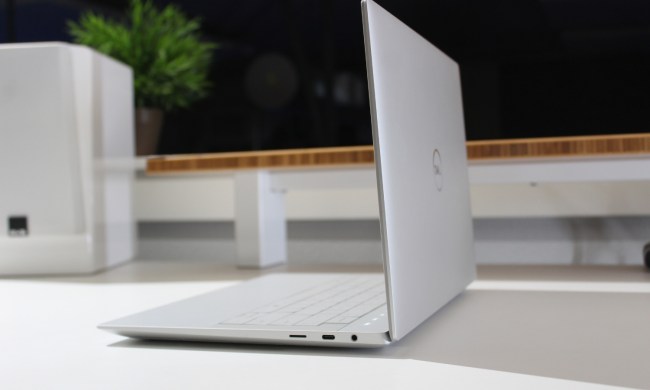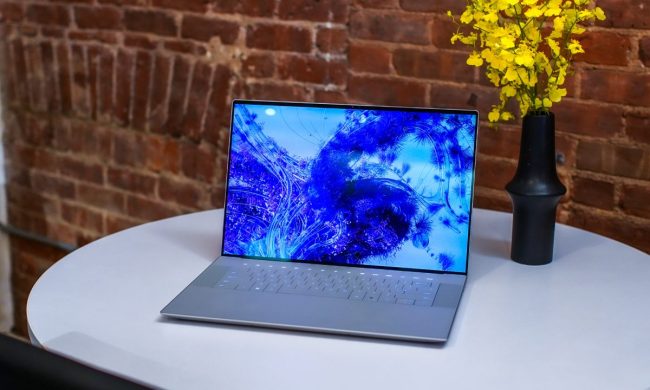When it comes to mainstream laptops, Dell offers two ranges: Inspiron and XPS. The Inspiron range considers value, from the 3000-series that you can have for around $400 to the 7000-series, which stretches up to $1,000.
The XPS range, on the other hand, uses the traditional “ultrabook” model, with premium design, components, battery life, and build quality. Dell charges for the privilege, however, with a kitted out XPS notebook reaching upwards of $3,000.
We compared the latest 15-inch options, the Inspiron 15 7000 and XPS 15, to see if the latter is worth its premium price or if the former is the better value.
Pricing and configurations
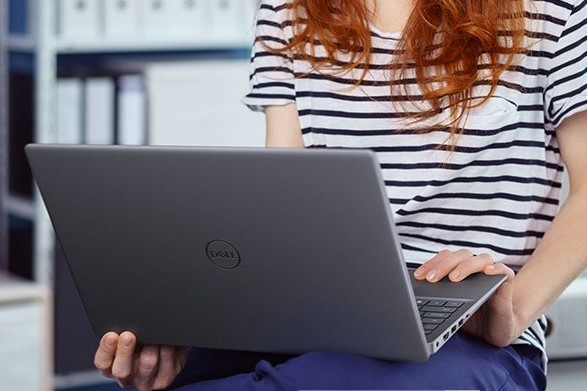
The Dell XPS 15 and Inspiron 15 7000 are very similar laptops — and they always have been. The main difference comes in build quality, while the internals remain comparable.
The Inspiron 15 7000 range starts with an i5-10300H unit equipped with 8GB of RAM, a 256GB NVMe solid-state drive, and on-board Intel UHD graphics for around $700. The second and last model in the range bumps up the specs across the board. For around $1,000, it comes with an i7-10750H, a 512GB NVMe SSD, and a GTX 1650 4GB GPU. Unfortunately, RAM remains the same across both models: 8GB at 2,933MHz.
It makes sense that the Inspiron 7000 configurations stop around $1,000. That’s where the XPS 15 range starts. For around $1,200, the base XPS 15 model comes with the same specs as the base Inspiron 15 7000 model: An i5-10300H, 8GB of RAM, Intel UHD graphics, and a 256GB NVMe SSD. The only major difference comes in the RAM. The XPS 15 comes with two 4GB modules, while the Inspiron comes with a single 8GB module on-board.
The XPS 15 range is best defined by its most expensive model, however, not its cheapest one. The top-of-the-line configuration comes packed with an i9-10885H, 32GB of RAM (split into two 16GB modules), a GTX 1650 Ti 4GB GPU, and a 1TB NVMe SSD. It also comes with a 4K touch display. You’ll pay a pretty penny, though: Around $2,700.
If you need more power, the XPS 15 range can accommodate. You can further upgrade your unit with up to 64GB of RAM and a 2TB SSD. The Inspiron line, unfortunately, doesn’t offer the same level of customization.
Dell Inspiron 15 7000
Dell XPS 15
Upgradability
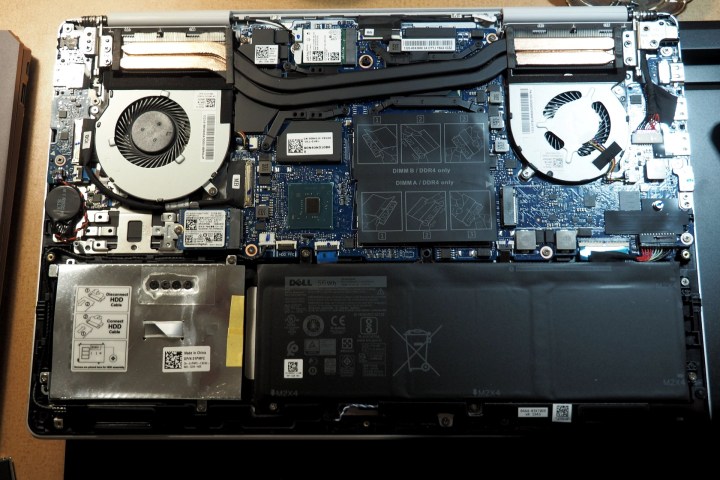
Look closely, and you’ll notice that the high-end Inspiron configuration only has 8GB of RAM. Furthermore, it’s a single RAM module, meaning that the memory runs in single-channel mode and slows down the laptop. Fortunately, the Inspiron 15 7000, particularly the 7591 model that we tested, is eminently upgradeable.
Take out the screws on the back of the laptop, and you can add and replace RAM, add a second PCIe SSD, and even add a third storage option in the form of a 2.5-inch drive (either SSD or 2.5-inch spinning hard drive). So, for around $30, you can upgrade the RAM to 16GB and switch to faster dual-channel memory by adding another 8GB RAM module to meet your storage needs.
The XPS 15 has similar configuration options, but it comes with dual-channel memory out of the box. You can swap out the large internal battery with a smaller one to make room for a 2.5-inch drive (either mechanical or solid-state).
Build quality and connectivity
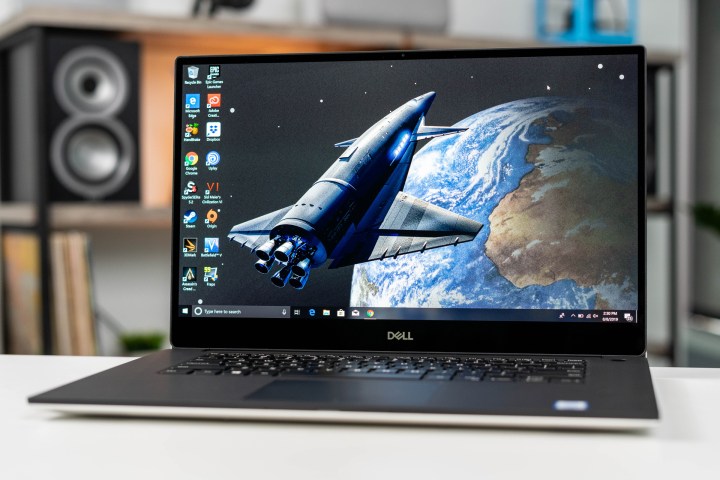
The Inspiron 15 7000 is made of stamped aluminum and thus allows only minimal bending or flexing in the lid, chassis, and keyboard deck. However, the XPS 15 is constructed of a combination of machined aluminum and carbon fiber (or glass fiber, for the Arctic White model). Build quality is the major difference between the two machines, and when comparing them side-by-side, that becomes apparent immediately.
They’re both built well, forgoing plastic for aluminum. It’s not so much that the Inspiron 15 7000 feels worse but more that the XPS 15 feels better. It’s clear where your money is going when you buy an XPS 15. However, if you’re on a budget, the Inspiron 7000 is still a solid unit.
They differ when it comes to connectivity, too. The Inspiron 15 has a standard spread of ports: Two USB-A 3.2 ports, a headphone/microphone combo jack, a full-sized HDMI, a USB-C 3.2 port, and a Micro SD card reader. The XPS 15 comes with fewer ports, but they’re more flexible. It ships with a single USB-C 3.1 port with power delivery, a full-size SD card reader, and a headphone/microphone combo jack. The two Thunderbolt 3 ports make the difference, allowing you to add more connectivity with one of the best Thunderbolt 3 docks.
Both laptops are the same — or, at least, very similar — when it comes to wireless connectivity. Both support Wi-Fi 6 and up to Bluetooth 5.1. The only difference is that the XPS 15 comes with a nicer AX1650 Wi-Fi module, while the Inspiron 15 comes with an AX201 module.
Keyboard and touchpad

Both laptops offer keyboards with sufficient travel and mechanisms with a nice click. The XPS 15’s keyboard is slightly more precise, though, and fast-touch typists will prefer it. The touchpads are a large point of deviation. Although both support Microsoft Precision drivers, the 2020 XPS 15 comes with a massive touchpad, similar to the MacBook Pro. The Inspiron 15 has a more traditional touchpad, around half the size of the XPS 15 and offset to the left.
You can configure the XPS 15 with a touch display, either full HD (1,920 x 1,080) or 4K (3,840 x 2,160), which isn’t available on the Inspiron. Finally, both laptops utilize fingerprint readers to support Windows 10 Hello password-free logins, and both work reliably and quickly.
Portability and battery life

The Inspiron 15 7000 is equipped with a 56 watt-hour battery, which is what allows for the third storage bay. Given its fast CPU, that’s not a lot of battery capacity — even with a less power-hungry full HD display — and it showed up in our battery tests. For example, it managed only six hours in our web-browsing test, and that’s the best indicator of productivity longevity.
The XPS 15 has more battery options. The base model comes with the same 56 watt-hour battery as the Inspiron 15 7000, but you can upgrade that to an 86 watt-hour battery (at the cost of another drive bay).
The XPS 15 has a larger battery, but that doesn’t mean it has more battery life. The 4K display that shows up on high-end configurations will suck battery life just as quickly as the Inspiron: Around six hours with a light workload. You can configure the XPS 15 with a full HD display, however, which will vastly improve battery life.
As far as portability goes, the XPS 15 and Inspiron 15 7000 are nearly identical. The XPS 15 is slightly thinner, technically, but you won’t notice a difference. You may notice a slight difference in weight, however. The Inspiron 15 7000 is the lighter of the two at 3.86 pounds. The XPS 15 is slightly heavier at 4 pounds with the 56 watt-hour battery or 4.5 pounds with the 86 watt-hour battery.
Display

Between the two Inspiron 15 7000 configurations, there’s only one display: A full HD IPS panel. It’s a non-touch display confined within thin, though not invisible, bezels. The Inspiron 15 7000 still uses the traditional 16:9 aspect ratio with a webcam situated at the top. It’s a good screen, but nothing special.
The XPS 15’s screen is. It uses a 16:10 aspect ratio, with the full HD model sporting slightly more pixels than 16:9 displays (1,920 x 1,200). The same is true of the 4K model.
Additionally, the XPS 15 comes with an InfinityEdge panel, with nearly invisible bezels all around the screen. It may not sound like much, but the slightly larger screen combined with the slightly smaller bezels makes the display on the XPS 15 feel way bigger than it should.
It looks great, too. As we noted in our review, the XPS 15’s screen is perfect for photo and video editors. It’s also more durable, sporting Gorilla Glass 6 on the touchscreen model.
Performance

You can configure the Inspiron 15 7000 with either a Core i5-10300H or Core i7-10750H CPU, but the GTX 1050 is the sole graphics option outside of on-board graphics. The XPS 15, on the other hand, can be configured with up to a Core i9-10885H and a GTX 1650 (as well as up to 64GB of RAM). It’s by far the faster option, whether you need a speedy productivity machine or a creative workstation.
The combination of these parts makes for a serious video editing and rendering machine. The GTX 1650 will get you better frame rates in games, too, though it’s far from a proper gaming laptop.
The two laptops should provide similar performance when equipped with the same components, which means the Inspiron 15 is the better value in terms of raw performance for the price.
The XPS 15 wins in most cases

The Inspiron 15 7000 offers a very attractive price, as well as slightly superior upgradability. That’s nothing to sneeze at. If you’re looking under $1,000, it’s your only choice in this comparison.
In the end, when we look at each laptop as a whole, we favor the XPS 15 as the winning system. Among the reasons why is configurability. The Inspiron 15 7000 may have superior upgradability, but you can configure the XPS 15 with better components out of the box, the most important of which is that beefy, 10th-gen i9 processor.
There is around a 200$ price difference between the basic XPS 15 and the Inspiron 15 7000, and for good reason. That price buys you better build quality, a slightly more efficient keyboard, a thinner chassis, and improved battery life. While the Inspiron 15 7000 has perfectly adequate specs, the XPS 15 is clearly superior which justifies the higher base price.
The two options end up being highly competitive, but the XPS 15 comes out on top.


